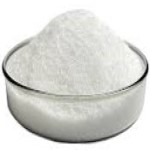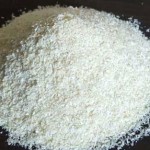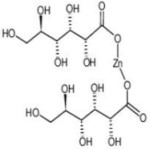CAS Number 4468-02-4, Zinc Gluconate USP NF BP Ph Eur Analytical Reagent FCC Food Grade & Encapsulated Zinc Gluconate Manufacturers Exporters








CAS Number 4468-02-4, Zinc Gluconate & Encapsulated Zinc Gluconate Manufacturer Exporter
For Properties Specifications of Zinc Gluconate & Encapsulated Zinc Gluconate Click Properties, Specifications of Zinc Gluconate & Encapsulated Zinc Gluconate Manufacturer.
For Uses of Zinc Gluconate & Encapsulated Zinc Gluconate Click Uses of Zinc Gluconate & Encapsulated Zinc Gluconate Manufacturer.
For For SDS MSDS Sheet of Zinc Gluconate & Encapsulated Zinc Gluconate Click SDS Safety Data Sheet MSDS Sheet of Zinc Gluconate & Encapsulated Zinc Gluconate Manufacturer.
The Properties and Specifications of Zinc Gluconate & Encapsulated Zinc Gluconate:
Zinc Gluconate USP Grade Specifications
C12H22O14Zn --- 455.68
Bis(D-gluconato-O1,O2) zinc.
Zinc D-gluconate (1:2) [CAS Number 4468-02-4].
Zinc Gluconate contains not less than 97.0 percent and not more than 102.0 percent of C12H22O14Zn, calculated on the anhydrous basis.
Identification—
A: A solution (1 in 10) responds to the tests for Zinc.
B: Chromatographic plate test.
pH: between 5.5 and 7.5, in a solution (1 in 100).
Water: not more than 11.6%.
Chloride: A 1.0-g portion shows no more chloride than corresponds to 0.70 mL of 0.020 N hydrochloric acid (0.05%).
Sulfate: A 2.0-g portion shows no more sulfate than corresponds to 1.0 mL of 0.020 N sulfuric acid (0.05%).
Arsenic: the limit is 3 ppm.
Reducing substances: the limit is 1.0%.
Limit of cadmium: the limit is 5 ppm.
Limit of lead: To pass the test (0.001%).
Specifications of Zinc Gluconate BP Ph Eur Grade Specifications:
C12H22ZnO14,xH2O --- 455.7 (anhydrous substance)
DEFINITION
Anhydrous or hydrated zinc D-gluconate.
Content: 98.0 per cent to 102.0 per cent (anhydrous substance).
CHARACTERS
Appearance: White or almost white, hygroscopic, crystalline powder.
Solubility: Soluble in water, practically insoluble in anhydrous ethanol and in methylene chloride.
IDENTIFICATION
A. Thin-layer chromatography to pass the test.
B. Dissolve 0.1 g in 5 mL of water. Add 0.5 mL of potassium ferrocyanide solution. A white precipitate is formed that does not dissolve upon the addition of 5 mL of hydrochloric acid.
TESTS
Solution S: Dissolve 1.0 g in water R and dilute to 50 mL with the same solvent.
Appearance of solution: Solution S is not more opalescent than reference suspension II and not more intensely coloured than reference solution.
Sucrose and reducing sugars: Dissolve 0.5 g in a mixture of 2 mL of hydrochloric acid and 10 mL of water. Boil for 5 min, allow to cool, add 10 mL of sodium carbonate solution and allow to stand for 10 min. Dilute to 25 mL with water and filter. To 5 mL of the filtrate add 2 mL of cupri-tartaric solution and boil for 1 min. Allow to stand for 2 min. No red precipitate is formed.
Chlorides: Maximum 500 ppm.
Sulfates: Maximum 500 ppm.
Cadmium: Maximum 2 ppm.
Water: Maximum 12.0 per cent, determined on 80.0 mg.
Microbial contamination:
TAMC: acceptance criterion 1000 CFU/g.
TYMC: acceptance criterion 100 CFU/g.
Zinc Gluconate FCC Food Grade Specifications
C12H22O14Zn Formula weight 455.68
CAS: [CAS 4468-02-4]
DESCRIPTION
Zinc Gluconate occurs as a white or nearly white, granular or crystalline powder and as a mixture of various states of hydration, up to the trihydrate, depending on the method of isolation. It is freely soluble in water and very slightly soluble in alcohol.
REQUIREMENTS
Identification:
A. A 1:10 aqueous solution gives positive tests for Zinc.
B: Chromatographic plate test.
Assay: Not less than 97.0% and not more than 102.0% of C12H22O14Zn, calculated on the anhydrous basis.
Cadmium: Not more than 2 mg/kg.
Chloride: Not more than 0.05%.
Lead: Not more than 2 mg/kg.
Reducing Substances: Not more than 1.0%.
Sulfate: Not more than 0.05%.
Water: Not more than 11.6%.
Specification of Micro-encapsulated Copper Gluconate:
Appearance: White granules.
Core material: Zinc Gluconate 60 to 80% or as required by the buyer.
Coating: Mono and Diglycerides or Hydrogenated vegetable oil or any other encapsulating material as desired by the buyer.
Lead: Not more than 5 mg/kg.
Particle size: Uniform particle size in microns as per buyers need.
The Uses of Zinc Gluconate & Encapsulated Zinc Gluconate:
Zinc Gluconate is a nutritional supplement containing the zinc salt form of gluconic acid for the purpose of providing zinc an essential trace element. Zinc Gluconate is used to help the immune system. It is used to ease cold and flu signs. It is used to help growth and good health. Zinc gluconate lozenges are used to help make cold symptoms less severe or shorter in duration. This includes sore throat, cough, sneezing, etc. Encapsulated Zinc Gluconate is used for supplements.
The MSDS-SDS Hazard Statement of Zinc Gluconate & Encapsulated Zinc Gluconate:
Zinc Gluconate SDS, Safety Data Sheet
MSDS Sheet, Material Safety Data Sheet 31-Jan-23
Section 1: Chemical Product and Company Identification
Product Name & Other Names: Zinc Gluconate or Gluconic Acid, Zinc Salt or Zinc, Bis(D-Gloconato-O1,O2)-; ZINC, BIS(D-GLUCONATO-O1,O2)-
Chemical Formula: C12H22ZnO14.(xH20)
Molecular Weight: 455.68
CAS Number: 4468-02-4
EINECS EC Code: 224-736-9
Relevant uses and uses advised against (if any): Industrial Manufacturing.
Section 2: Hazards Identification
GHS, Globally Harmonized System Classification in accordance with 29 CFR 1910
Classification according to Regulation (EC) No 1272/2008
Not a hazardous substance or mixture according to Regulation (EC) No. 1272/2008.
This substance is not classified as dangerous according to Directive 67/548/EEC.
Labeling according to GHS & Regulation (EC) No 1272/2008
GHS Label Elements NONE |
Signal Word: None
Precautionary statements:
P261: Avoid breathing dust/fume/gas/mist/vapors/spray.
P262: Do not get in eyes, on skin, or on clothing.
P281: Use personal protective equipment as required.
P302+P352: IF ON SKIN: Wash with plenty of soap and water.
P304+P340: IF INHALED: Remove victim to fresh air and keep at rest in a position comfortable for breathing.
P305+P351+P338: IF IN EYES: Rinse cautiously with water for several minutes. Remove contact lenses, if present and easy to do. Continue rinsing.
P337+313: If eye irritation persists get medical advice/attention.
Section 3: Composition and Information on Ingredients
Product Name & Other Names: Zinc Gluconate or Gluconic Acid, Zinc Salt or Zinc, Bis(D-Gloconato-O1,O2)-; ZINC, BIS(D-GLUCONATO-O1,O2)-
CAS Number: 4468-02-4
EINECS EC Code: 224-736-9
Section 4: First Aid Measures
Always seek medical advice after the first aid treatment.
Skin: Rinse with water. Soap may be used. Seek Medical Aid.
Eyes: Wash eyes with plenty of water for at least 15 minutes, lifting lids occasionally. Seek Medical Aid.
Inhalation: Remove to fresh air. If not breathing, give artificial respiration. If breathing is difficult, give oxygen.
Ingestion: If swallowed, induce vomiting immediately after giving two glasses of water. Never give anything by mouth to an unconscious person.
Section 5: Fire and Explosion Data
Flammability of the Product: Non-flammable in ordinary handling. May be combustible at high temperature.
Products of Combustion: Zinc oxide, Fumes and Oxides of carbon.
Fire Fighting Media and Instructions: Use water spray, alcohol-resistant foam, dry chemical, or carbon dioxide.
Special Information: In the event of a fire, wear full protective clothing and NIOSH-approved self-contained breathing apparatus with full face piece operated in the pressure demand or other positive pressure mode. At high temperatures under fire conditions, it may produce toxic or irritating fumes. Fire-extinguishing work is done from the windward and the suitable fire-extinguishing method according to the surrounding situation is used.
Section 6: Accidental Release Measures
Personal precautions, protective equipment, and emergency procedures: Avoid breathing dust/fumes/gas/mist/vapors/spray. Use individual protective equipment (waterproof boots, suitable protective clothing, safety glasses, etc.). Do not approach facing the wind.
Environmental precautions: Do not let the product enter drains, soil, or water sources.
Methods and materials used for containment Cleanup procedures and Storage: Do not inhale dust, vapors, mist, or gas. Avoid dust formation. Contain spilled material. Cover with an inert, non-combustible absorbent material, (e.g. sand, earth, diatomaceous earth, vermiculite). Use a shovel to put the material into a convenient waste disposal container.
Section 7: Handling and Storage
Precautions for safe handling: Apply according to good manufacturing and industrial hygiene practices. Ensure proper ventilation. In case of insufficient ventilation, wear suitable respiratory equipment. Wash thoroughly after handling. Do not drink, eat, or smoke while handling. Avoid contact with skin, eyes, and clothing. Minimize dust generation. Avoid breathing dust/fumes/gas/mist/vapors/spray. Keep container tightly closed. Avoid ingestion and inhalation. Use individual protective equipment (waterproof boots, suitable protective clothing, safety glasses, etc.).
Conditions for safe storage, including any incompatibilities: Store in cool, dry, and ventilated area away from heat sources and protected from sunlight in tightly closed original container. Keep air contact to a minimum. Store protected from heat, sparks and ignition sources and incompatible materials. Avoid contact with skin and eyes. Avoid inhalation of dust/mist/vapor. Do not store with incompatible materials like strong oxidizing agents and acids.
Section 8: Exposure Controls/Personal Protection
Exposure Limits: This product does not contain any hazardous materials with occupational exposure limits established by the region-specific regulatory bodies.
Engineering Controls: Use process enclosures, local exhaust ventilation, or other engineering controls to keep airborne levels low.
Ventilation System: A system of local and/or general exhaust is recommended to keep employee exposures as low as possible.
Personal Respirators (NIOSH Approved): For conditions of use where exposure to dust or mist is apparent and engineering controls are not feasible, a particulate respirator may be worn.
Skin Protection: Wear protective gloves and clean body-covering clothing.
Eye Protection: Use chemical safety goggles and/or full face shield where dusting or splashing of solutions is possible. Maintain eye wash fountain and quick-drench facilities in work area.
Other Control Measures: Maintain good housekeeping in work area. Handle in accordance with good industrial hygiene and safety practice.
Section 9: Physical and Chemical Properties
Physical state and appearance: Solid white powder or granules.
Odor: Odorless.
Odor threshold: Not available.
pH (5% soln/water): 6 to 7.5.
Relative density: Not available.
Melting Point: Decomposition temperature: 155°C (311°F).
Initial boiling point and boiling range: Not available.
Flash point: Not available.
Auto-ignition temperature: Not available.
Decomposition temperature: Not available.
Upper/lower flammability or explosive limits: Not available.
Vapor pressure: Not available.
Vapor density: Not available.
Evaporation rate: Not available.
Flammability (solid, gas): Not available.
Partition coefficient: n-octanol/water: Not available.
Solubility(ies): Soluble in water.
Viscosity: Not available.
Section 10: Stability and Reactivity Data
Stability: It is stable.
Conditions to Avoid: Heat, Flame, Sparks, other ignition sources and Incompatible materials
Incompatibility with various substances: Heat, light, strong oxidizing agents.
Hazardous decomposition products: Fumes, Carbon oxides & Zinc oxides are expected.
Polymerization: Will not occur.
Section 11: Toxicological Information
Toxicity to Animals: Oral Rat LD50: 1,290 mg/kg.
Carcinogenicity: No component of this product present at levels greater than or equal to 0.1% is identified as possible or confirmed human carcinogen by IARC, ACGIH, OSHA and NTP.
Mutagenic Effects: Not available.
Developmental Toxicity: Not available.
Reproductive Effects: No information available.
Section 12: Ecological Information
Toxicity to fish: No information available.
Persistence and Degradability: No information available.
Mobility: No information available.
Bioaccumulation/ Accumulation: No information available.
Results of PBT and vPvB assessment: No data available for assessment.
Section 13: Disposal Considerations
Waste Disposal: Waste must be disposed of in accordance with federal, state, and local environmental control regulations.
Section 14: Transport Information
DOT USA, TDG Canada & ADR/RID Europe: Not controlled.
IMDG/IMO: Not controlled.
IATA/ICAO: Not controlled.
Section 15: Other Regulatory Information
USA Regulations:
SARA 311/312 Hazardous Categorization: None
California Proposition 65: Not listed.
DISCLAIMER: The information and recommendations set forth herein are presented in good faith and believed correct as of the date hereof. It is compiled from various sources and it is not necessarily all inclusive nor fully adequate in every circumstance. In addition, these suggestions should not be confused with nor followed in violation of applicable laws, regulations, rules or insurance requirements applicable. This MSDS sheet is intended only as a guide to the appropriate precautionary handling of the material by a properly trained person using this product. Individuals receiving the information must exercise their independent judgment in determining its appropriateness for a particular purpose.
Anmol Chemicals & Pharmaceuticals Pvt. Ltd. is an off-shoot of Anmol Chemicals Taloja. It is located in MIDC Taloja and it is manufacturing pharmaceutical grades of API, Excepients, Food grade and Reagent grade chemicals. Anmol Chemicals & Pharmaceuticals Pvt. Ltd. is a several decades old group of companies, engaged in manufacturing, supplying, distributing, wholesale supplies for actual users, retail or small pack supplies for research and development chemicals, fine and speciality chemicals, pharmaceutical excipients, mineral fortifiers in chemically pure, Analytical reagent grade, IP BP USP Ph Eur EP JP and other pharmaceutical grade monograph including FCC Food grade chemicals and Nutraceuticals, Mineral Fortifiers at best prices.

Zinc Gluconate & Encapsulated Zinc Gluconate Structure
CAS Number 4468-02-4, Zinc Gluconate & Encapsulated Zinc Gluconate Manufacturer Exporter
ANMOL CHEMICALS & PHARMACEUTICALS Pvt. Ltd.
India, USA, Europe, UAE
TELEPHONE: +912223770100
Navi Mumbai, INDIA
e-mail: info(At the rate i.e. @)anmol.org
Copyright. 13-nov-24
We manufacture:
Aluminum Chloride Hexahydrate Anhydrous
Aluminum Chlorohydrate Solution Powder
Calcium Magnesium Lactate Gluconate
Hydrated Manganese Glycerophosphate
Hydrated Sodium Glycerophosphate

